Wireless LC Conformal Temperature Sensor Based on Ag Film (9912-K FL) for Bearing Temperature Measurement
Abstract
:1. Introduction
2. Experiment
2.1. Materials
2.2. In Situ Fabrication of a Wireless LC Conformal Temperature Sensor
- A.
- Clean the test bearing surface with alcohol and a dust-free cloth. Integrate silver paste (9912-K FL) in situ on the surface of the inner ring of the test bearing using the screen-printing process to form a spiral inductor with an inner diameter of , outer diameter of , line width of , and a line pitch of 1 mm, with two turns in total;
- B.
- Place the test bearing into a muffle furnace for sintering and maintain for ;
- C.
- After completion, take out the bearing and let it stand for cooling, and use a multimeter to measure whether the coil is conducting;
- D.
- Connect the test bearing with the ceramic rod using a high-temperature-resistant non-conductive adhesive and place the connected test bearing and ceramic rod on the heating table at for followed by for . The ceramic rod is in diameter and in length;
- E.
- Construct the antenna using diameter copper wire; the antenna diameter is approximately , and the antenna utilizes an SMA-KE deflection angle connector;
- F.
- Connect one end of the ceramic rod to the coupling of the motor and the other end to the supporting bearing.
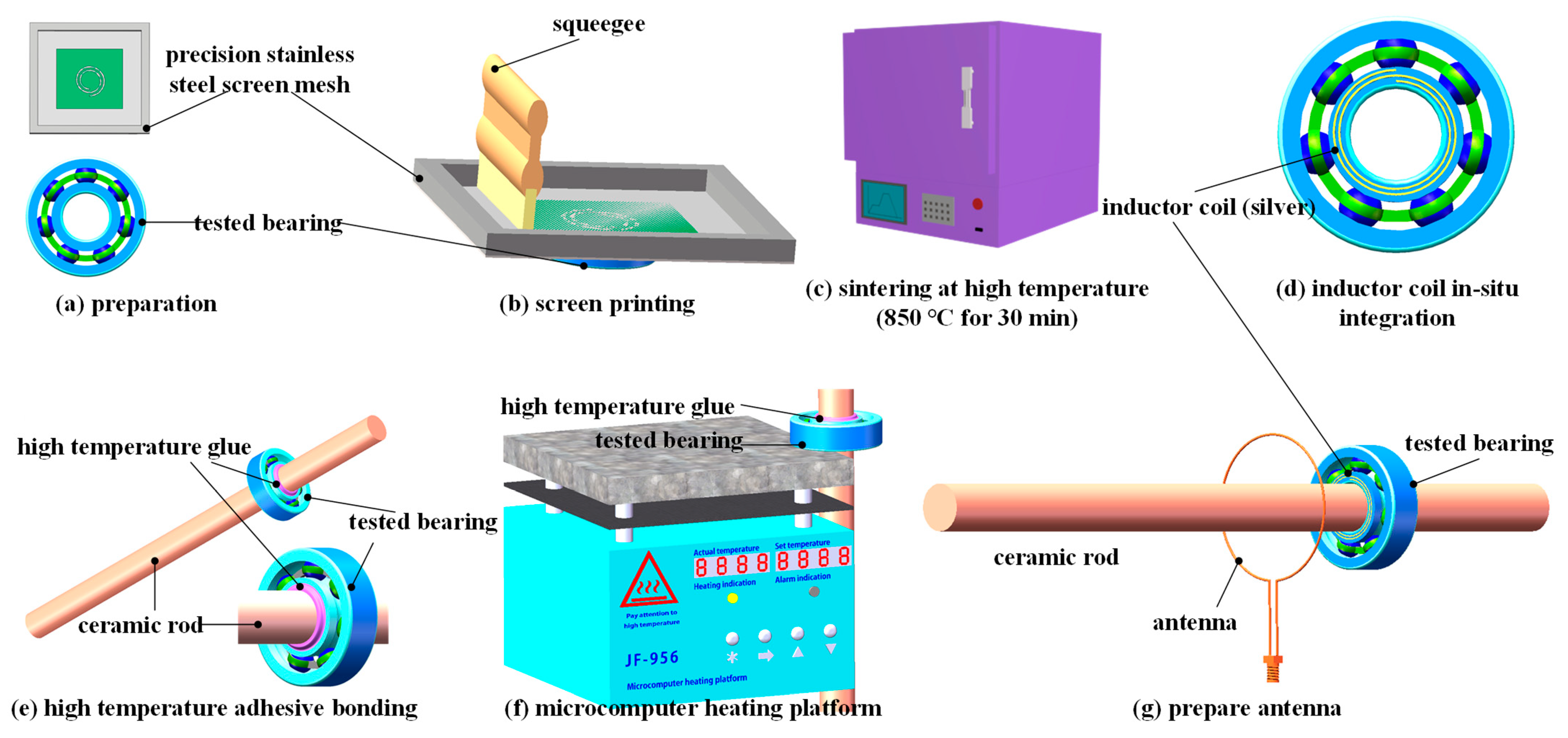
3. Results and Discussion
4. Conclusions
Author Contributions
Funding
Data Availability Statement
Conflicts of Interest
References
- Elena, K.; Peter, F. Influence of Operation Temperature on Rolling Bearings. Defect Diffus. Forum 2019, 395, 64–72. [Google Scholar]
- Yang, T.; He, X.; Ran, Z.; Xie, Z.; Rao, Y.; Qiao, X.; He, Z.; He, P. Highly Integrated All-Fiber FP/FBG Sensor for Accurate Measurement of Strain under High Temperature. Materials 2018, 11, 1867. [Google Scholar] [CrossRef] [PubMed] [Green Version]
- Ou, X.L.; Wen, G.G.; Huang, X.; Su, Y.; Chen, X.F.; Lin, H.L. A deep sequence multi-distribution adversarial model for bearing abnormal condition detection. Measurement 2021, 182, 109529. [Google Scholar] [CrossRef]
- Wang, X.; Guo, Y.; Xiong, L. Hybrid fiber Bragg grating sensor for vibration and temperature monitoring of a train bearing. Chin. Opt. Lett. 2018, 16, 070604. [Google Scholar] [CrossRef] [Green Version]
- Henao-Sepulveda, J.A.; Toledo-Quiñones, M.; Jia, Y. Contactless monitoring of ball bearing temperature. In Proceedings of the 2005 IEEE Instrumentationand Measurement Technology Conference Proceedings, Ottawa, ON, Canada, 16–19 May 2005; pp. 1571–1573. [Google Scholar]
- Cardona, M.; Cifuentes, M.; Hernandez, B.; Prado, W. A Case Study on Remote Instrumentation of Vibration and Temperature in Bearing Housings. J. Low Power Electron. Appl. 2021, 11, 44. [Google Scholar] [CrossRef]
- Yu, M.Y.; Feng, Z.G.; Huang, J.J.; Yu, Y.T. Characteristic extraction of rolling bearing compound faults of aero-engine. J. Vibroeng. 2017, 19, 4285–4299. [Google Scholar] [CrossRef]
- Draney, R.K. High temperature sensor for bearing health monitoring. In Proceedings of the IEEE Aerospace Conference, Big Sky, MT, USA, 1–8 March 2008; pp. 1–7. [Google Scholar]
- Brusa, E.; Vedova, M.D.; Giorio, L.; Maggiore, P. Thermal condition monitoring of large smart bearing through fiber optic sensors. Mech. Adv. Mater. Struct. 2019, 28, 1187–1193. [Google Scholar] [CrossRef]
- Aman, S.; Shukla, A.; Mahmud, M.; Wang, W. A smart sensor-based monitoring system for vibration measurement and bearing fault detection. Meas. Sci. Technol. 2020, 31, 105104. [Google Scholar]
- Vivekananthan, B.; Hoang-Phuong, P.; Toan, D.; Dzung, V.D.; Nam-Trung, N. Thermal Flow Sensors for Harsh Environments. Sensors 2017, 17, 2061. [Google Scholar]
- Jones, C.M.; Dai, B.; Price, J.; Li, J.; Pearl, M.; Soltmann, B.; Myrick, M.L. A New Multivariate Optical Computing Microelement and Miniature Sensor for Spectroscopic Chemical Sensing in Harsh Environments: Design, Fabrication, and Testing. Sensors 2019, 19, 701. [Google Scholar] [CrossRef] [Green Version]
- Abhishek, G.; Chen, Z.; Sheldon, Q.S.; Zhang, H.F. High-Temperature Gas Sensors for Harsh Environment Applications: A Review. CLEAN—Soil Air Water 2019, 47, 1800491. [Google Scholar]
- Ashtekar, A.; Kovacs, A.; Sadeghi, F.; Peroulis, D. Bearing cage telemeter for the detection of shaft imbalance in rotating systems. In Proceedings of the 2010 IEEE Radio and Wireless Symposium (RWS), New Orleans, LA, USA, 10–14 January 2010; pp. 5–8. [Google Scholar]
- Cao, L.; Sadeghi, F.; Stacke, L.E. A Wireless Sensor Telemeter for in situ Cage Vibration Measurement and Corroboration with Analytical Results. Tribol. Trans. 2018, 61, 1013–1026. [Google Scholar] [CrossRef]
- Kovacs, A.S. Early-Warning Wireless Telemeter for Harsh-Environment Bearings. In Proceedings of the 2007 IEEE SENSORS, Atlanta, GA, USA, 28–31 October 2007. [Google Scholar]
- Gupta, L.A.; Ruddock, D.C.; Hall, M.T.; Sadeghi, F.; Peroulis, D. Remotely powered wireless strain telemeter. In Proceedings of the IEEE International Symposium on Antennas and Propagation, Spokane, WA, USA, 3–8 July 2011. [Google Scholar]
- Scott, S.; Kovacs, A.; Gupta, L.A.; Sadeghi, F. Wireless temperature microsensors integrated on bearings for health monitoring applications. In Proceedings of the 2011 IEEE 24th International Conference on Micro Electro Mechanical Systems, Cancun, Mexico, 23–27 January 2011. [Google Scholar]
- Scott, S.; Sadeghi, F.; Peroulis, D. An inherently-robust 300 °C MEMS temperature sensor for wireless health monitoring of ball and rolling element bearings. In Proceedings of the 2009 IEEE SENSORS, Christchurch, New Zealand, 25–28 October 2009. [Google Scholar]
- Scott, S.; Sadeghi, F.; Peroulis, D. Highly Reliable MEMS Temperature Sensors for 275 Applications—Part 1: Design and Technology. J. Microelectromech. Syst. 2013, 22, 225–235. [Google Scholar] [CrossRef]
- Scott, S.; Katz, J.; Sadeghi, F.; Peroulis, D. Highly Reliable MEMS Temperature Sensors for 275 Applications—Part 2: Creep and Cycling Performance. J. Microelectromech. Syst. 2013, 22, 236–243. [Google Scholar] [CrossRef]
- Janssens, O.; Schulz, R.; Slavkovikj, V.; Stockman, K.; Loccufier, M.; Van de Walle, R.; Hoecke, S.V. Thermal image based fault diagnosis for rotating machinery. Infrared Phys. Technol. 2015, 73, 78–87. [Google Scholar] [CrossRef]
- Joshi, A.; Marble, S.; Sadeghi, F. Bearing cage temperature measurement using radio telemetry. Proc. Inst. Mech. Eng. Part J J. Eng. Tribol. 2001, 215, 471–481. [Google Scholar] [CrossRef]
- Yan, D.; Yang, Y.; Hong, Y.; Liang, T.; Yao, Z.; Chen, X.; Xiong, J. Low-cost wireless temperature measurement: Design, manufacture, and testing of a PCB-based wireless passive temperature sensor. Sensors 2018, 18, 532. [Google Scholar] [CrossRef] [Green Version]
- Zhou, X.; Zhang, H.; Hao, X.; Liao, X.; Han, Q. Investigation on thermal behavior and temperature distribution of bearing inner and outer rings. Tribol. Int. 2019, 130, 289–298. [Google Scholar] [CrossRef]
- Ma, G.M.; Wu, Z.; Zhou, H.Y.; Jiang, J.; Chen, W.X.; Zheng, S.S.; Li, C.R.; Li, X.; Wang, Z.B. A Wireless and Passive Online Temperature Monitoring System for GIS Based on Surface-Acoustic-Wave Sensor. IEEE Trans. Power Deliv. 2016, 31, 1270–1280. [Google Scholar] [CrossRef]
- Gao, X.; Cheng, L.N.; Xue, X.F.; Zhai, S.P.; Liang, Y.; Wang, W.; Liu, M.W.; Zhu, J.L.; Li, Z.Y. Development of Wireless and Passive SAW Temperature Sensor with Very High Accuracy. Appl. Sci. 2021, 11, 7422. [Google Scholar] [CrossRef]
- Radovanovic, M.; Mojic-Lante, B.; Cvejin, K.N.; Srdic, V.V.; Stojanovic, G.M. A wireless LC sensor coated with Ba0. 9Bi0. 066TiO3 for measuring temperature. Sensors 2015, 15, 11454–11464. [Google Scholar] [CrossRef] [Green Version]
- Ren, Q.Y.; Wang, L.F.; Huang, J.Q.; Huang, Q. Simultaneous remote sensing of temperature and humidity by LC-type passive wireless sensors. J. Microelectromech. Syst. 2015, 24, 1117–1123. [Google Scholar] [CrossRef]
- Pan, S.L.; Memon, M.M.; Wan, J.; Wang, T.; Zhang, W.L. The influence of temperature on the pressure sensitivity of surface acoustic wave pressure sensor. Sens. Actuators A Phys. 2021, 332, 113–183. [Google Scholar] [CrossRef]
- Lin, L.; Ma, M.S.; Zhang, F.Q.; Liu, F.; Liu, Z.F.; Li, Y.X. Integrated passive wireless pressure and temperature dual-parameter sensor based on LTCC technology. Ceram. Int. 2018, 44, S129–S132. [Google Scholar] [CrossRef]
- Sumit, K.J.; Ankush, M.; Sanjeev, K.R. An inductive-capacitive-circuit-based micro-electromechanical system wireless capacitive pressure sensor for avionic applications: Preliminary investigations, theoretical modelling and simulation examination of newly proposed methodology. Meas. Control 2019, 52, 7–8. [Google Scholar]
- Ren, Q.Y.; Wang, L.F.; Huang, Q.A. Parallel capacitive temperature micro-sensor for passive wireless sensing applications. Electron. Lett. 2016, 52, 1345–1347. [Google Scholar] [CrossRef]
- Ma, M.S.; Wang, Y.; Liu, F.; Zhang, F.Q.; Liu, Z.F.; Li, Y.X. Passive Wireless LC Proximity Sensor Based on LTCC Technology. Sensors 2019, 19, 1110. [Google Scholar] [CrossRef] [Green Version]
- Juan, I.S.; Noemí, P.; Joaquin, D.N.; Jaizki, M. Implementation of Simultaneous Multi-Parameter Monitoring Based in LC-Type Passive Wireless Sensing with Partial Overlapping and Decoupling Coils. Sensors 2019, 19, 5183. [Google Scholar]
- Deng, W.J.; Wang, L.F.; Dong, L.; Huang, Q.A. Symmetric LC Circuit Configurations for Passive Wireless Multifunctional Sensors. J. Microelectromech. Syst. 2019, 28, 344–350. [Google Scholar] [CrossRef]
- Brouwer, M.D.; Gupta, L.A.; Sadeghi, F.; Peroulis, D.; Adams, D. High temperature dynamic viscosity sensor for engine oil applications. Sens. Actuators A Phys. 2012, 173, 102–107. [Google Scholar] [CrossRef]
- MD, B.; Shahidi, A.; Gupta, L.A.; Sadeghi, F.; Peroulis, D. Application of ball bearing cage RF temperature sensor in high speed turbocharger. In Proceedings of the 2014 IEEE Antennas and Propagation Society International Symposium (APSURSI), Memphis, TN, USA, 6–11 July 2014. [Google Scholar]
- Sertbakan, T.R.; Al-Shakarchi, E.K.; Mala, S.S. The Preparation of Nano Silver by Chemical Reduction Method. J. Mod. Phys. 2022, 13, 81–88. [Google Scholar] [CrossRef]
- Wonsub, L.; Dongil, Y.; Youngoo, Y. An Antenna Proximity Sensor for Mobile Terminals Using Reflection Coefficient. Sensors 2018, 18, 2103. [Google Scholar]
- Kishikawa, R.; Horibe, M. A New Method for Calibrating Impedance of an Artificial Mains Network with a Vector Network Analyzer. IEEE Trans. Electromagn. Compat. 2018, 60, 822–828. [Google Scholar] [CrossRef]
- Li, H.; Xu, J.; Wang, X.; Liu, D.N.; Feng, L.S. High-Bandwidth Tracking Method of Resonant Frequency for Sensing Resonators. J. Lightwave Technol. 2020, 38, 898–904. [Google Scholar] [CrossRef]
- Huang, Q.A.; Dong, L.; Wang, L.F. LC Passive Wireless Sensors Toward a Wireless Sensing Platform: Status, Prospects, and Challenges. J. Microelectromech. Syst. 2016, 25, 822–841. [Google Scholar] [CrossRef]
- Zhang, C.; Wang, L.F.; Huang, J.Q.; Huang, Q. An LC-Type Passive Wireless Humidity Sensor System with Portable Telemetry Unit. J. Microelectromech. Syst. 2015, 24, 575–581. [Google Scholar] [CrossRef]

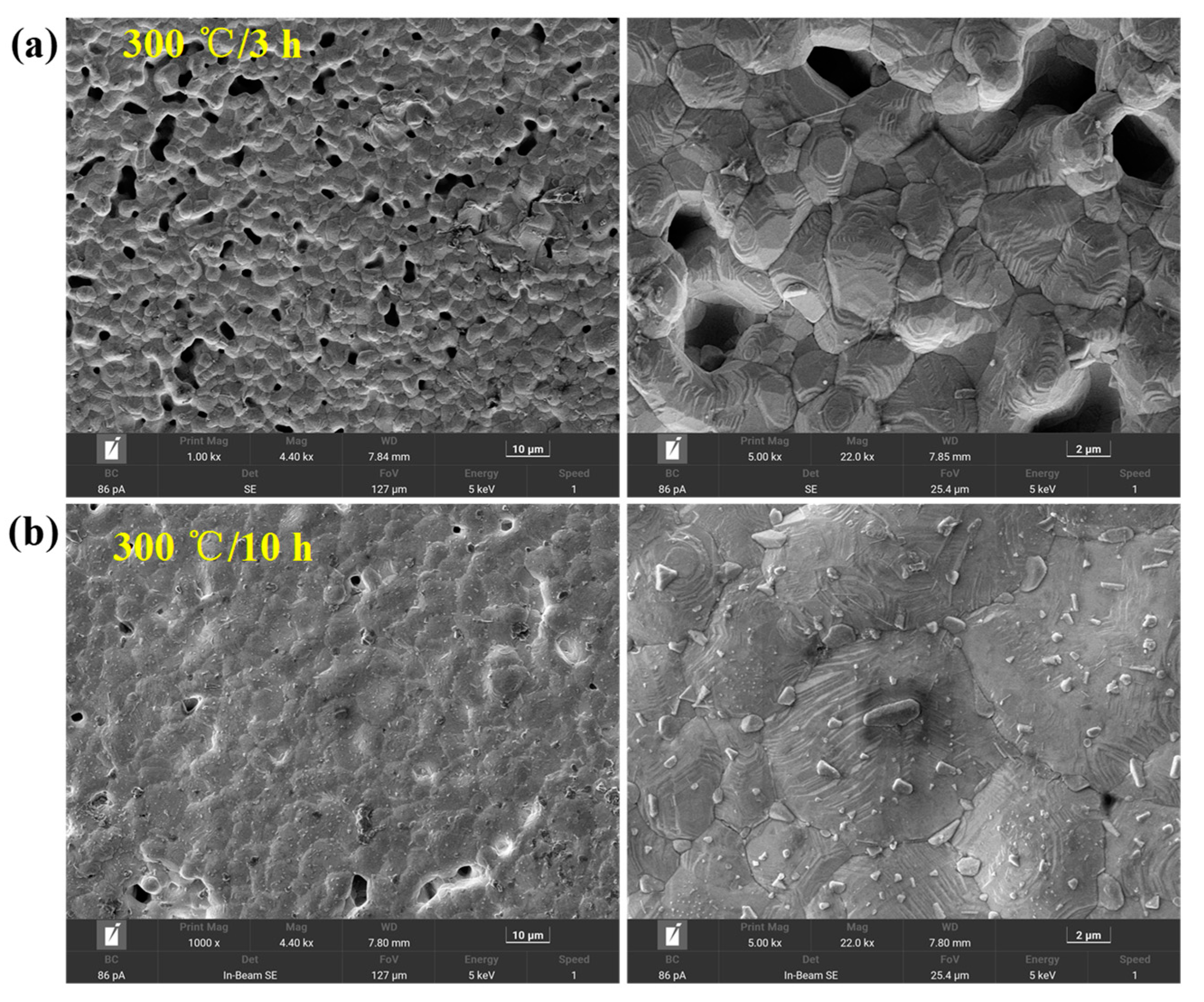


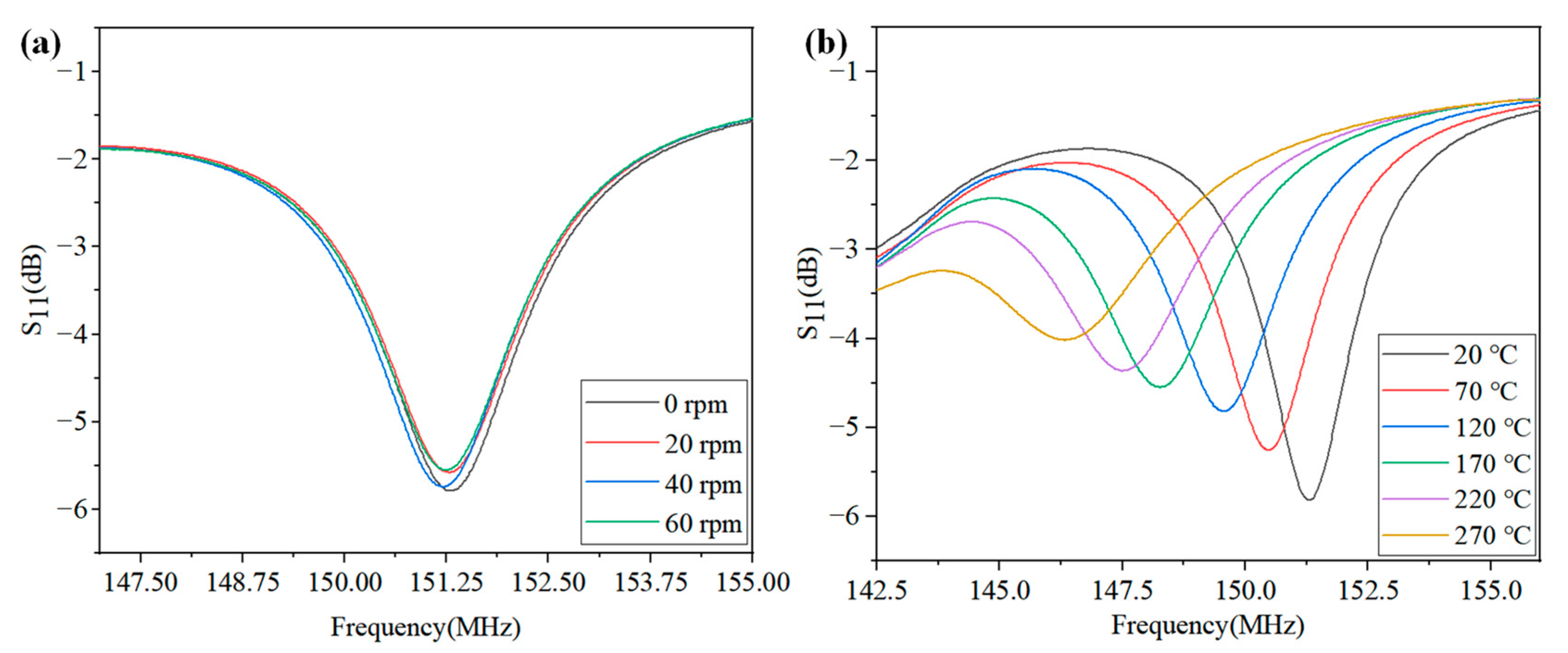
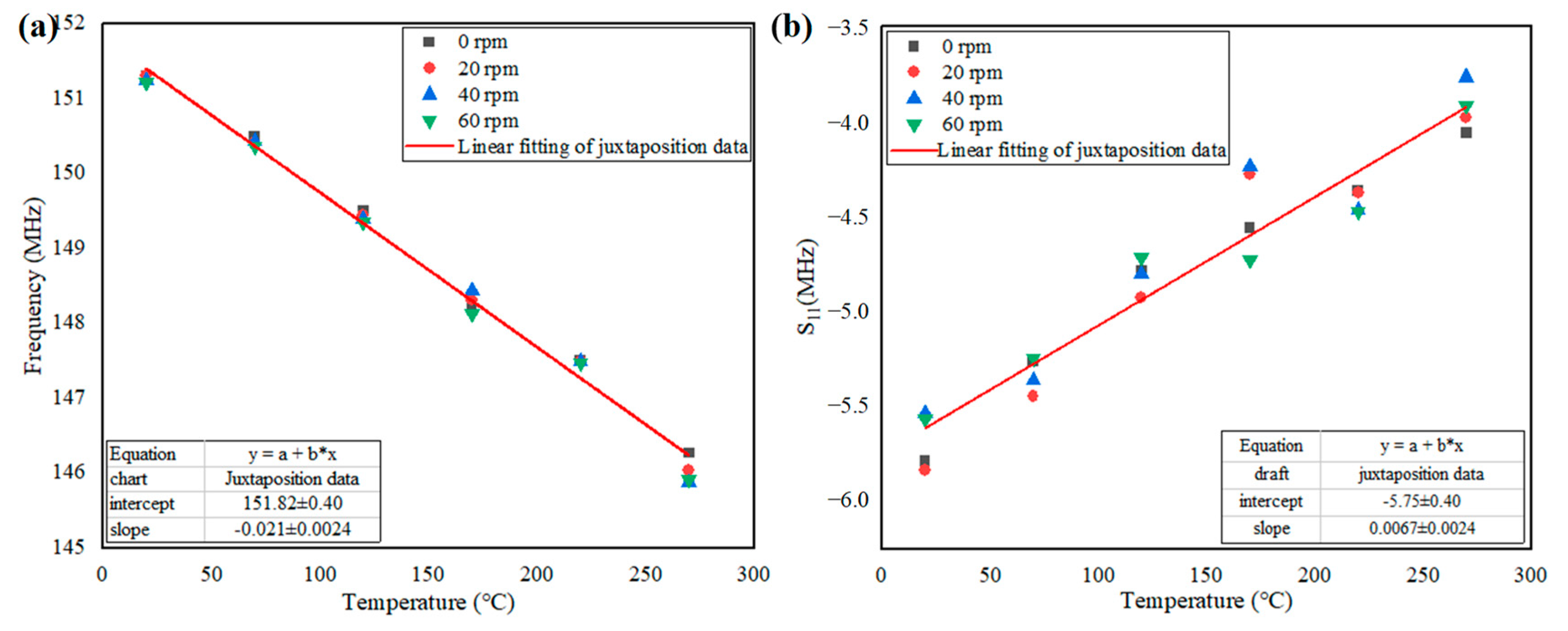
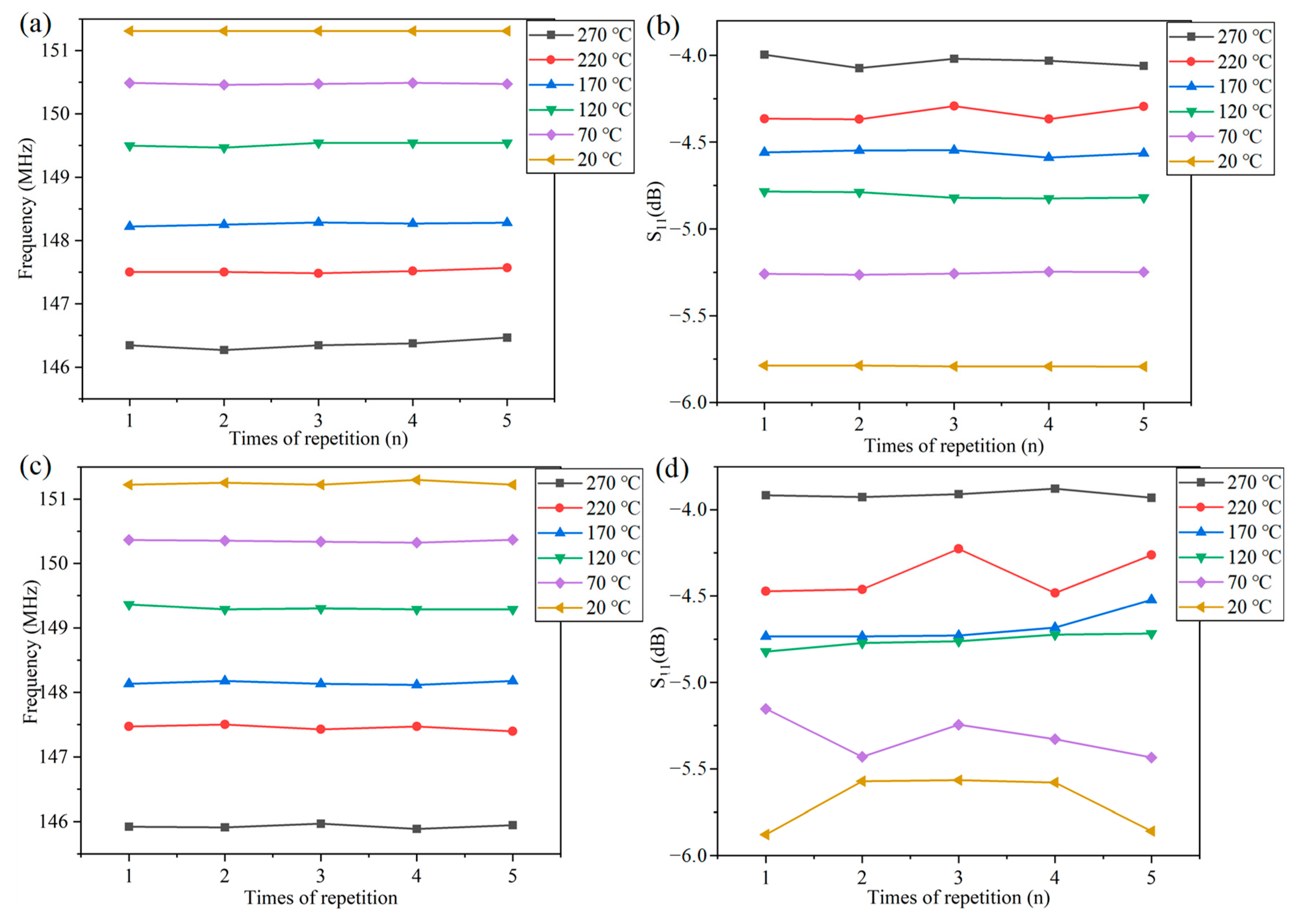

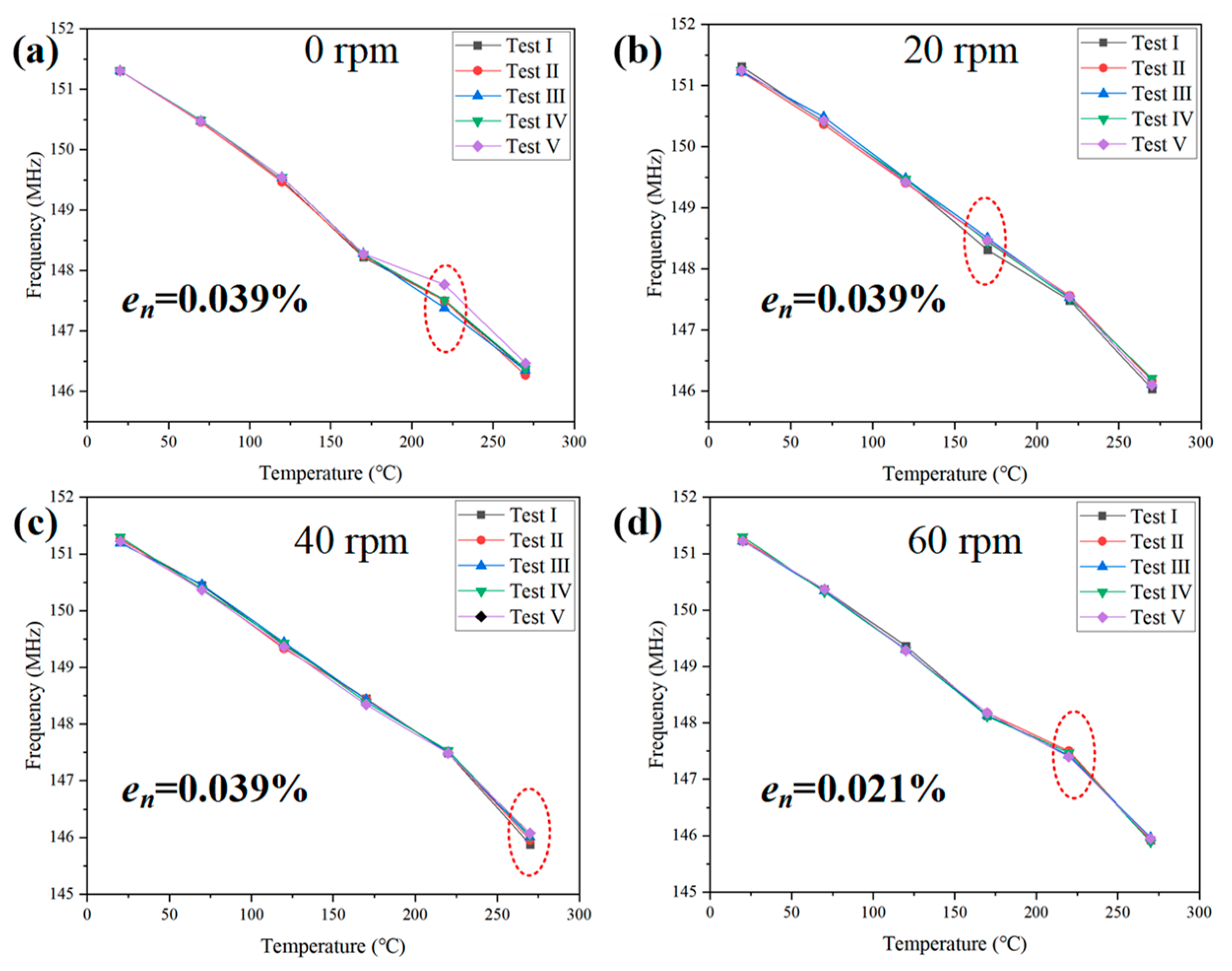
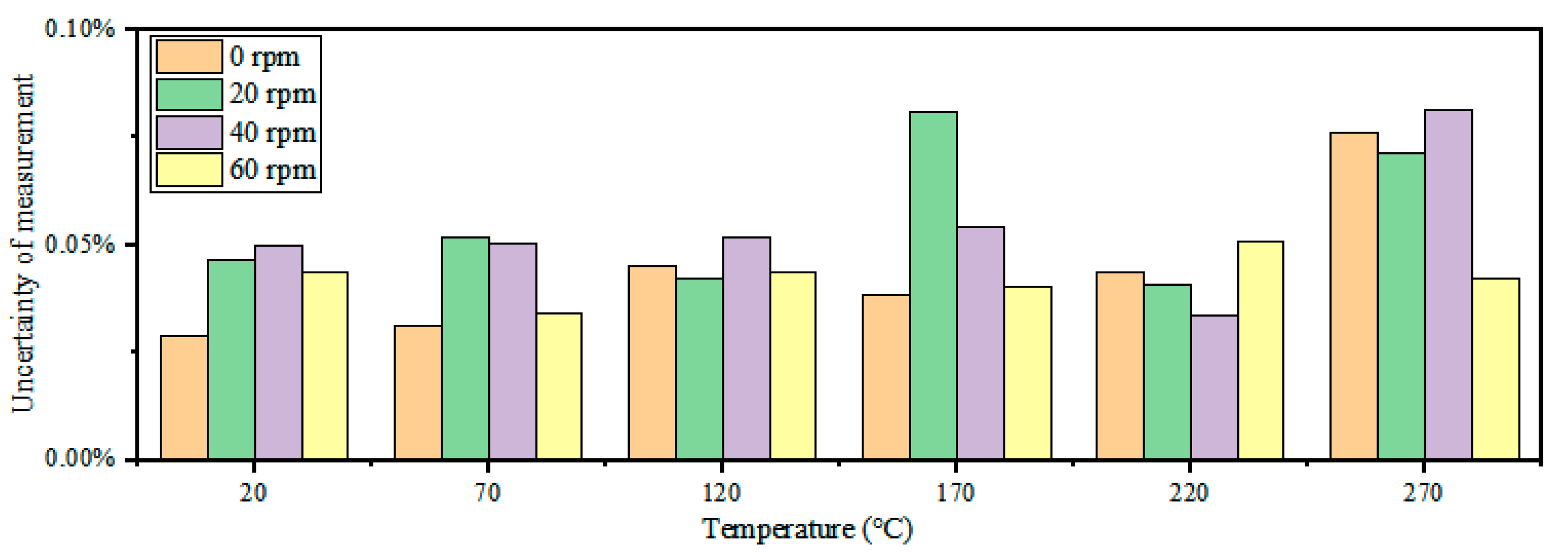
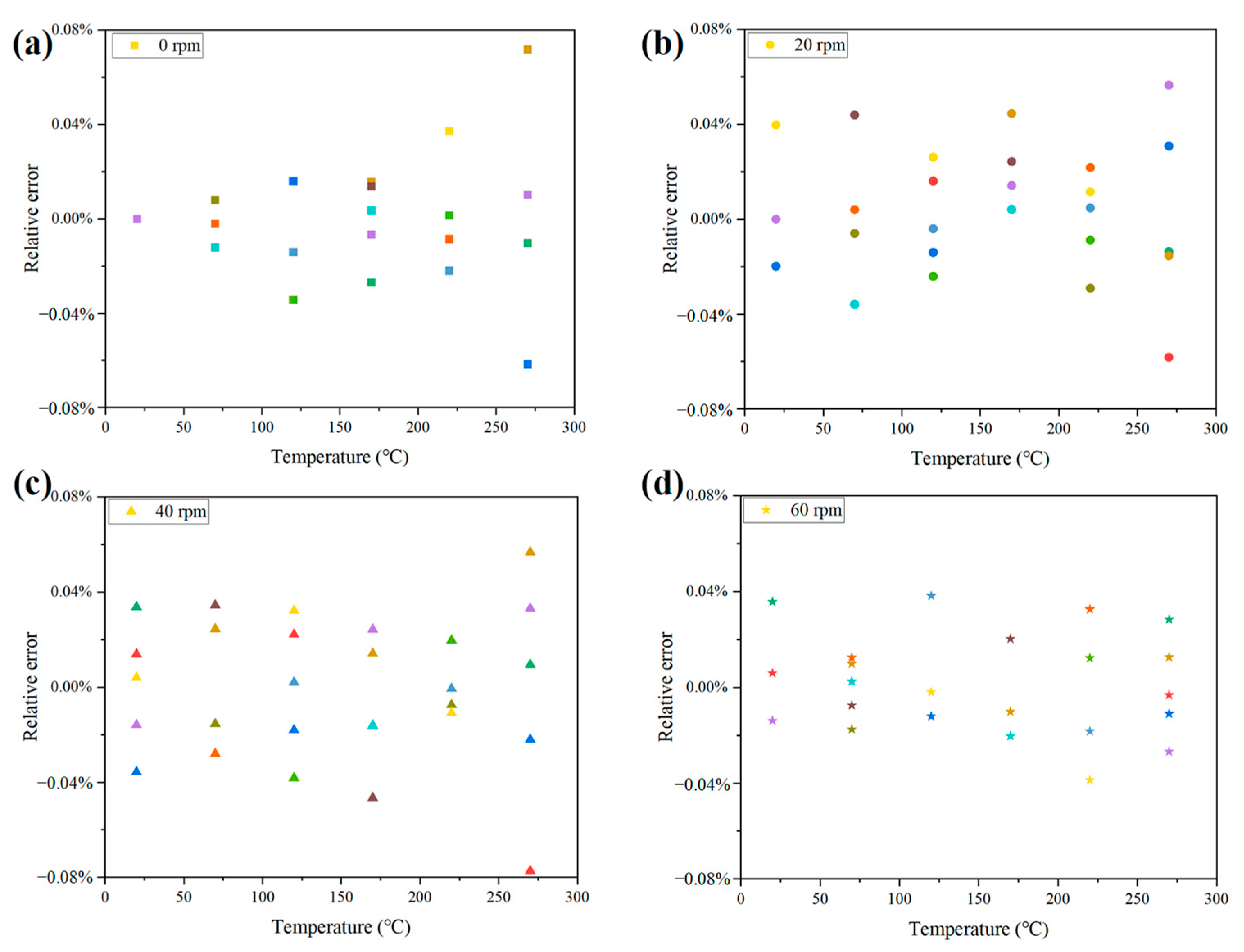
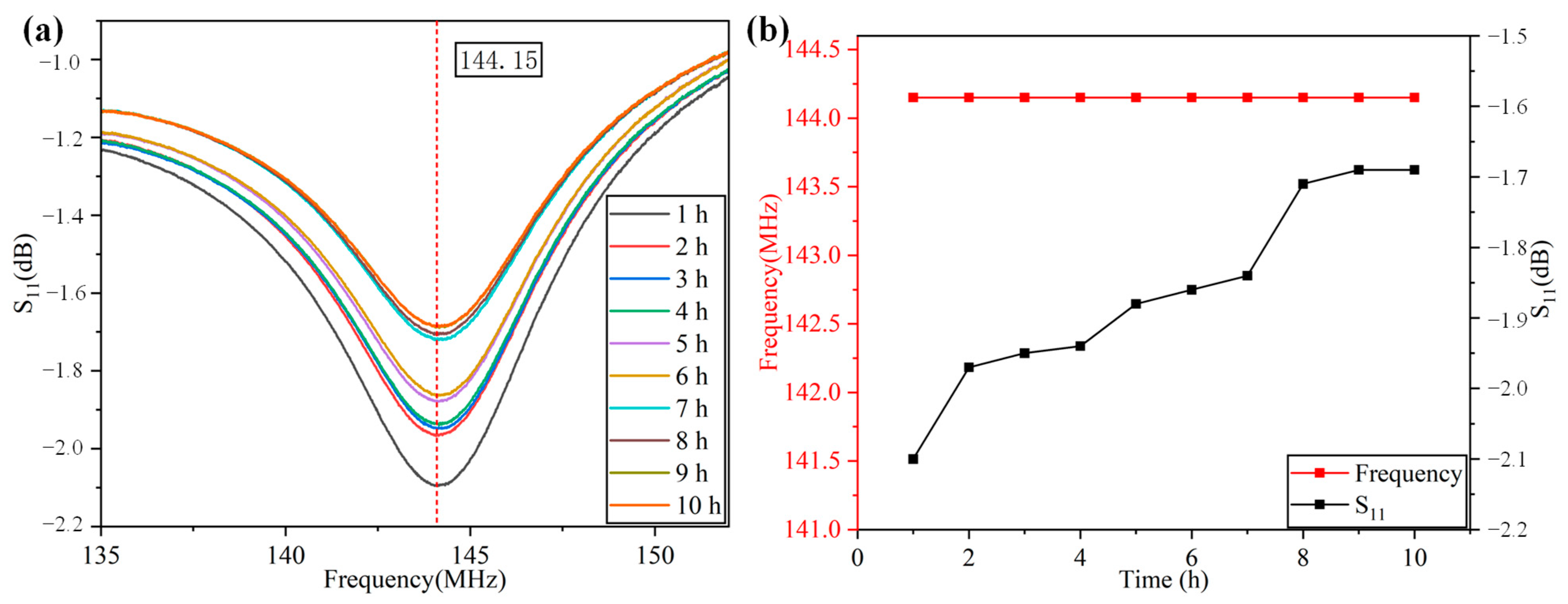
Publisher’s Note: MDPI stays neutral with regard to jurisdictional claims in published maps and institutional affiliations. |
© 2022 by the authors. Licensee MDPI, Basel, Switzerland. This article is an open access article distributed under the terms and conditions of the Creative Commons Attribution (CC BY) license (https://creativecommons.org/licenses/by/4.0/).
Share and Cite
Li, C.; Feng, Q.; Hong, Y.; Gao, L.; Guo, X.; Xue, W.; Xiong, J. Wireless LC Conformal Temperature Sensor Based on Ag Film (9912-K FL) for Bearing Temperature Measurement. Nanomaterials 2022, 12, 2899. https://doi.org/10.3390/nano12172899
Li C, Feng Q, Hong Y, Gao L, Guo X, Xue W, Xiong J. Wireless LC Conformal Temperature Sensor Based on Ag Film (9912-K FL) for Bearing Temperature Measurement. Nanomaterials. 2022; 12(17):2899. https://doi.org/10.3390/nano12172899
Chicago/Turabian StyleLi, Chen, Qiyun Feng, Yingping Hong, Lixia Gao, Ximing Guo, Wenzhi Xue, and Jijun Xiong. 2022. "Wireless LC Conformal Temperature Sensor Based on Ag Film (9912-K FL) for Bearing Temperature Measurement" Nanomaterials 12, no. 17: 2899. https://doi.org/10.3390/nano12172899
APA StyleLi, C., Feng, Q., Hong, Y., Gao, L., Guo, X., Xue, W., & Xiong, J. (2022). Wireless LC Conformal Temperature Sensor Based on Ag Film (9912-K FL) for Bearing Temperature Measurement. Nanomaterials, 12(17), 2899. https://doi.org/10.3390/nano12172899




